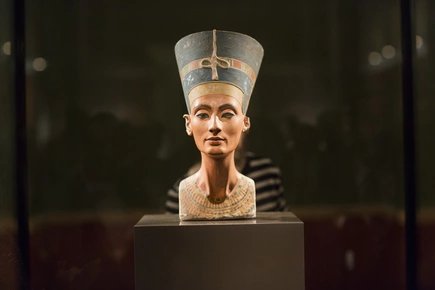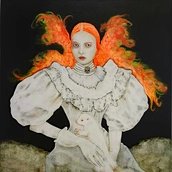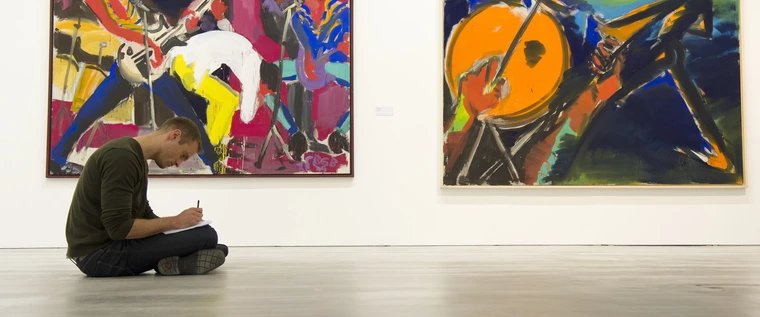
Thinking in Images from Gerstenberg to Scharf
The world is turbulent and difficult. How fortunate that there are islands! Outside, in the open air, or inner imaginary ones that we can find just about anywhere – in our heads, at home or somewhere else.
Art collections, particularly private ones, are islands of a special sort. Not governed by considerations of public accountability, they are subject to the highly personal criteria of the collector alone. Consequently, they provide a place of retreat, far from the world, that facilitates independent thinking in images.
To mark the hundredth birthday of Dieter and Hilde Scharf, Possibilities of an Island explores the passion for collecting shared by the couple and their daughter Julietta Scharf. It is the first presentation to show a substantial selection of those works that are not part of the holdings that were entrusted to the Nationalgalerie as a long-term loan and that have been on display in a dedicated building as “Sammlung Scharf-Gerstenberg” since 2008.
Building on the renowned collection put together by his grandfather Otto Gerstenberg (1848–1935), Dieter Scharf established a foundation in 2001, from which he selected a group of some 350 works for the Sammlung Scharf-Gerstenberg. His focus as a collector was on Surrealism, but he cast his net wide enough to include the movement's precursors and successors. Spread over the two floors, the galleries offer a broad panorama of fantastical art, ranging from works by Goya, Piranesi and Redon to Jean Dubuffet's Art Brut.
Surrealism and Beyond
Thematically, Possibilities of an Island goes beyond the expanded concept of Surrealism of the Sammlung Scharf-Gerstenberg. Setting the tone right from the outset are two emblematic floor pieces by the Swiss artist Kavata Mbiti: the white acrylic resin sculpture “Möglichkeiten einer Insel I” (“Possibilities of an Island I”), which lent its title to the exhibition, and, in stark contrast to it, the black three-part wooden sculpture, “Kiel” (“Keel”). While the former recalls the soft, fluid shapes dreamt up by Jean Arp or Hans Bellmer and seems to embody the idea of a self-generating and self-propelling semi-abstract form, the latter conjures up scary images of sharks, their dorsal fins emerging ominously from the water as they circle around an island.
But where there is danger, there is also hope of rescue or salvation – and indeed, the exhibition offers a whole archipelago of ‘possible islands’, each with its own theme. Subdivided into twelve chapters, it explores ways of countering the threats and impositions of everyday life through art: by escaping into idylls, into the private sphere or into another age, by putting together a visual world of our own, through complex systems, by fleeing into fantasy or by adopting an ironic attitude towards what we are most afraid of – death.
The exhibition presents a selection of some 150 paintings, watercolours, drawings, prints, sculptures and objects by celebrated artists such as Alfred Sisley, Auguste Renoir, Egon Schiele, Max Beckmann and Hannah Höch, as well as by somewhat less well-known creators of darkly fantastical art such as Alfred Kubin, Léon Spilliaert and Unica Zürn.
The Alte Nationalgalerie is opening another window onto the collections assembled by the Scharf family with the exhibition The Scharf Collection, which runs from 24 October 2025 to 15 February 2026. Like the exhibition here at the Scharf Gerstenberg Collection, it ranges from Goya to contemporary art. But while Dieter Scharf, and later his daughter Julietta, prioritised Surrealism, his brother Walther Scharf, followed by his son René, focused on Impressionism and Modernism.
- A special exhibition of the Nationalgalerie – Staatliche Museen zu Berlin
#MuseumsviertelCharlottenburg



